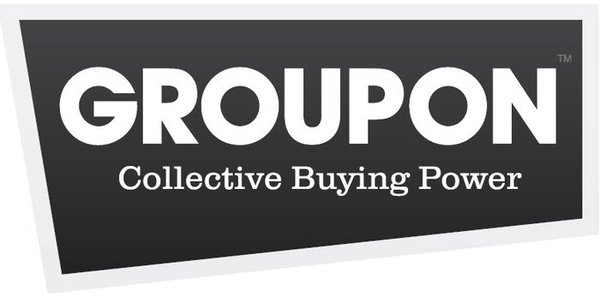With the news that Google is about to purchase the group buying website Groupon for between $3 and $6 Billion dollars the rise of the two year old website has been nothing short of meteoric. Founded on November 11th 2008 in Chicago the website gives local businesses a platform to promote themselves to their immediate audience through value for money offers. It’s a simple idea that has spawned many competitors, but Groupon is about to differentiate itself by launching Groupon 2.0 a more socially embedded version of the service.

The Competition
Businesses that take part in the Groupon service typically offer anything from 50% to 90% off deals, with the average deal being 60% off. Groupon get roughly 50% of the transaction value, while the business get a boost in custom, in the hope that a small percentage of those return over and over. The deal only kicks in after a certain volume of sales have been made, and there will always be some who purchase but never use the deal. It’s a very simple idea and one that has sparked many copycats from Living Social to the 200+ Groupon clones in China.
Place is the Space to be.
With such a simple idea, how has Groupon managed to position itself as the market leader? Commentators are suggesting its down to the agile Groupon salesforce and the relationships they have established with local businesses in 31 countries. ‘Local’ is the space Google (and Facebook, Foursquare et al) want to own. Through Google Places, Maps, Streetview and local listings in search, the internet giant could further add to its revenues by giving local businesses a compelling reason to stick with Google. Groupon offers not only a compelling reason, but also a very easy to use platform to do so. There’s no technical knowledge required as Groupon will put the copy and creatives for the deal in place. In a move to differentiate itself from competitors Groupon 2.0 launched earlier this week in the USA. More on that below.
The Statistics
Over on Comscore’s blog today there’s a great post on Groupon stats, which are truely impressive. Worldwide the website received 21.4 million unique visitors in October, 34% from the U.S., 14.5% from Germany and 11.4% from the U.K. 58% of users are female and those earning $100,000 or more are 22% more likely to visit the website. Over 3,000 employee’s coordinate 400 offers in 300 markets across 31 countries to a database of over 30 million subscribers. The most popular types of deals are restaurants, followed by health & beauty, activities, events, retail and services for home or auto. From the 16 million deals purchased in the two years since the company was formed, consumers have saved over $730 million. The company is growing so fast has revenues are approaching $350 million per month.
Popularity a Problem?
The concept of Groupon is so simple and straightforward, its revenues and growth so attractive it is no wonder the website has sparked numerous clones. How does a firm try and differentiate itself in order to secure its position? According to the Groupon Blog the website is about to get a makeover that includes several new features. Businesses will now be able to set up their own Groupon stores allowing them to promote their offers whenever they want, instead of waiting months to be featured in the current Groupon format. Customers will also be able to follow stores of their choosing, similar to how people follow or ‘like’ on Twitter and Facebook. This positions Groupon more as a social media channel, as a virtual shopping centre for customers to browse as they wish. This is something that Foursquare and Facebook Deals have been moving towards. Groupon suddenly becomes the main player in that space. However, the chink in their armour comes in the capabilities of firms to offer such huge discounts, and in how to move once off customers into long term loyal customers. Otherwise it’s a race to the bottom for all concerned.
The second new feature is a deal feed, a stream of personalised deals updated throughout the day. “Your deal feed includes your featured daily deal, deals posted by merchants you follow, and deals posted by merchants that we recommend based on what we know about you.” The website is also going to be heavily integrated with Facebook so you can see what your friends have bought and what shops they are now following. All great features to keep customers returning to the website, keeping it top of mind, and for giving Groupon a further ‘viral’ marketing edge to grow its subscriber base even faster. These new features roll out in the USA this week.
The Google deal hasn’t been officially confirmed yet, but if Google allow the company to grow, offering it support and online expertise they may have another Youtube on their hands. Which is something the internet giant needs.
Keep Reading

Brands Racing for Facebook Likes

How To Be More Popular On Facebook

How to Rank in Facebook Search

Pat Kinsley Talks Branding (Video)

More Twitter Marketing Examples

Lets Hear It For The Blog!

Is Facebook Messages the Future of Email?

A Facebook Book (Video)

What Do Facebook Impressions Tell Us?

The Beatles: Facebook More Important Than Google

A Pot Noeldle Christmas

Facebook Getting Better for Business?

What the Neworld Kids Did at Lunchtime

Have You Seen The New Facebook Profile?

Santa’s Bean Cam: Live on Facebook

Big Changes For Facebook Pages?

Social Media List of Lists 2010

Introducing Youtube Trends

Facebook Insights Now With Added Data
